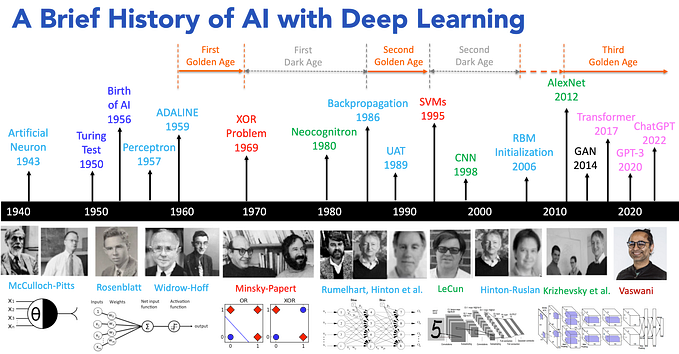TensorFlow Ecosystem for Efficient Deep Learning

Deep Learning today is a powerful and widely used tool for Artificial Intelligence and machine learning. Compared to traditional neural networks, deep learning can more effectively model complex patterns in data. This is due to its ability to learn multiple levels of representation, from low-level features to high-level concepts. As a result, deep learning is well suited for tasks such as image recognition and natural language processing. Furthermore, the availability of deep-learning open-source frameworks such as TensorFlow, Keras, and PyTorch has made it possible for everyone interested in deep learning to build and train models.
In this blog post, you will learn about one of the most popular deep learning frameworks, TensorFlow, and the different components of the TF Ecosystem that can help you build efficient deep learning solutions.
Introducing TensorFlow
TensorFlow is an open-source platform for machine learning. Google Brain team members originally developed it for internal use at Google. However, in 2015, it was released under the Apache License, making it available to the public. TensorFlow offers a variety of features that make it attractive to experienced machine learning developers and those just getting started. For example, TensorFlow can be used for both research and production purposes. It is also highly scalable, allowing developers to train models on a single device or across multiple devices. In addition, TensorFlow offers a rich set of tools and libraries that make development faster and easier. As a result, TensorFlow has become one of the most popular platforms for machine learning development.
Tensorflow Ecosystem
One of the things that I like about TensorFlow is that it is much more than a framework- it is a complete ecosystem. The TensorFlow Ecosystem (TFE) is a collection of tools and services that allow you to build and deploy machine learning models.

From datasets to pre-trained models, from running on high-end GPUs to edge devices, from training on a single system to training on the TPU cloud, and from production to the final deployment: TFE has tools for all. Let us start with the fuel of AI- the data itself.
TensorFlow Datasets
TensorFlow Dataset is a collection of datasets ready to use with TensorFlow. It handles downloading and preparing the data and provides simple APIs to access them. The goal is to make it easy to swap different datasets in and out of your code with minimal code changes. TensorFlow Datasets come with many built-in datasets, and you can also easily add your own. When writing this blog, TensorFlow DataSet contains 1108 datasets for various tasks for image, audio, video, and text.

TensorFlow Keras API
TensorFlow Keras API is a high-level API that makes it easy to construct, train, and deploy deep learning models. Easy to use, scalable, and extensible the Keras API makes it easy to get started with deep learning. It offers three ways to build models:
- Sequential API: It is simple and intuitive. Best suited for models designed as stacks of layers.
- Functional API: Functional API is the best way to go if the model has multiple inputs and multiple outputs and you can connect the layers as a directed acyclic graph.
- Model subclassing: If your model architecture includes recursive structures, you can use model sub-classing.
TensorFlow Hub
TensorFlow Hub is a library for publishing, discovering, and consuming reusable parts of machine learning models. It contains many pre-trained models, each with its self-contained TensorFlow graphs, weights, and assets.

TensorFlow Federated
TensorFlow Federated (TFF) is an open-source framework for federated learning developed by Google. It was released in September 2018 and is available on GitHub. TFF enables developers to build decentralized applications that run on various devices, including smartphones, sensors, and edge devices. TFF provides tools for data privacy and security issues inherent in decentralized applications. In addition, TFF allows developers to create custom models that can be federated across several devices. TensorFlow Federated is an essential tool for developing next-generation decentralized applications.
TensorBoard
TensorBoard is a powerful tool for visualizing and understanding complex neural networks. It allows users to view the structure of their networks and the training progress and performance. TensorBoard also enables users to inspect individual neurons and layers, providing insight into how the network is learning. In addition, TensorBoard can perform comparative analysis, allowing users to compare different network architectures side-by-side. As a result, TensorBoard is an essential tool for anyone working with neural networks.
Tensorflow Js
TensorFlow.js is an open-source hardware-accelerated JavaScript library for training and deploying machine learning models. It is specifically designed to take advantage of the WebGL API to perform fast matrix operations on the GPU. This makes it possible to train and deploy models in the browser without the need for any server-side code. TensorFlow.js also includes many pre-trained models that can be used for object detection and image classification tasks. In addition, the library provides a series of tools that makes it easy to convert existing TensorFlow models into the format required by TensorFlow.js. This makes it possible to use existing ML models in your web applications without retraining them from scratch. Ultimately, TensorFlow.js enables you to harness the power of machine learning in your web applications without compromising on performance or accuracy.
Next Steps
You can learn more about TensorFlow and how you can use it to build complex networks and build efficient machine learning pipelines from the book I co-authored with Antonio Guili and Sujit Pal: Deep Learning with TensorFlow and Keras, 3rd Edition.
Originally posted on OpenDataScience.com
Read more data science articles on OpenDataScience.com, including tutorials and guides from beginner to advanced levels! Subscribe to our weekly newsletter here and receive the latest news every Thursday. You can also get data science training on-demand wherever you are with our Ai+ Training platform. Subscribe to our fast-growing Medium Publication too, the ODSC Journal, and inquire about becoming a writer.










